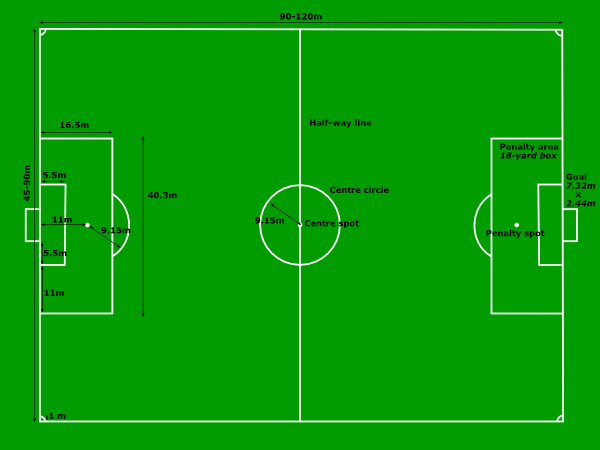1. Kicking:
(a) Toe kick
(b) Instep kick
(c) Outstep kick
(d) Low kick
(e) High kick
(f) Lofted kick
2. Ball control
3. Dribbling:
(a) Shift position dribbling
(b) Jaggle Dribbling
(c) Feint dribbling
4. Tackling:
(a) Front block tackling
(b) Sideway Tackling
(c) Interception Tackling
(d) Back Tackling
5. Trapping:
(a) Sole trap
(b) Inside foot trap
(c) Front step trap
(d) Outside foot trap
(e) Thigh trap
(f) Shin trap
(g) Chest trap
(h) Hollow trunk chest trap
(i) Head trap
6. Passing:
(a) Short passes
(b) Long passes
(c) Through passes
The brief description of some of the fundamentals of football is given below:
1. Short passes: Short passes are usually given to the team member who is very close. In these passes, instep or out step kick is given to the ball gently so that the team mate may collect the ball easily.
To learn this fundamental, regular practice is must.
2. Instep kick: For execution of instep kick, the non-striking foot should be brought alongside of the ball, slightly away from it.
The ball should be kicked with a relaxed forward swing of the kicking leg. This is executed after taking a few steps towards the ball. The ball should be contacted with the inside of the kicking foot. At this time, the body should be slightly in learning position. The head should be above the ball at the time of kicking, the eyes, knee and the ball should be in a straight line.
3. Outstep Kick: This kick is executed with the outside of the upper part of the toe. To do so, a slight twist of the foot to the right or left is required before striking the ball. Rest of the technique is the same as described in instep kick. This type of kicking is generally used in short distance passes.
4. Heading: Heading is an important skill which is used by players. To head a ball accurately, a player should judge the flight of the ball and wait for the proper time to take jump. When the ball comes near to the player he should take proper jump into the air and by bending his body backwards from the waist, he should strike the ball with a forward swing of his head. At this moment, his neck must remain stiff to prevent the neck injury. To learn this skill, one requires courage and hard practice.
5. Dribbling: For proper dribbling a player should use light strokes of his feet to direct the ball in a desired direction. For dribbling he may use inside or outside of his feet to control the ball. This can be done with one foot or change from one foot to another. The novice or the beginners should use the inside of his foot. He must tap the ball with front part of his foot while doing so, he should watch the ball and it should not be allowed to go far from his legs. He should take proper strides in coordination with the movement of the ball. He should not use hard strokes while dribbling. The practice of dribbling can be done by placing some obstacles in a straight line.








